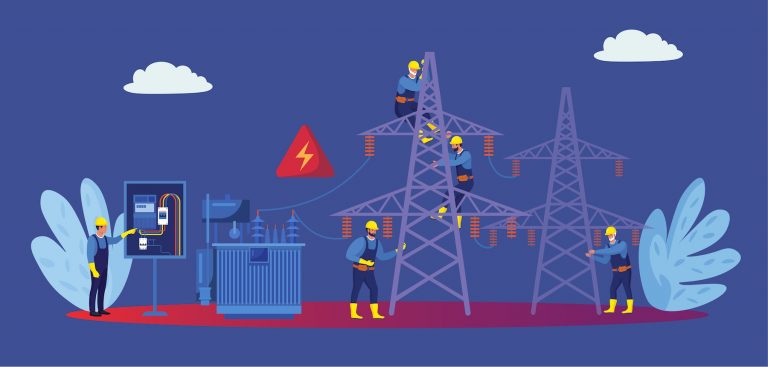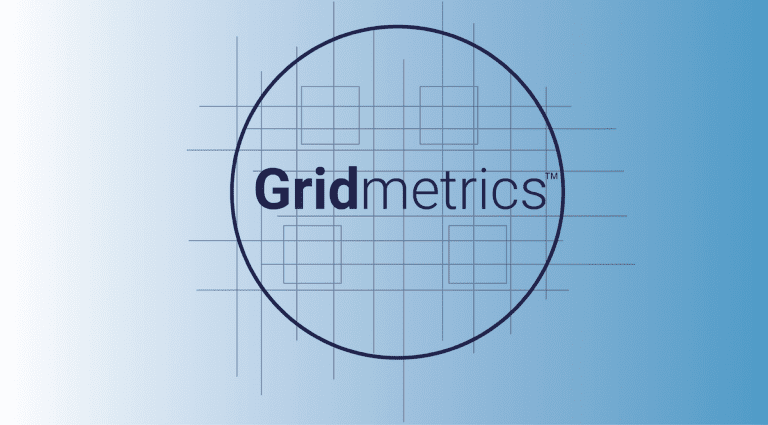News
Identifying U.S. Power Grid Disruptions with Broadband Networks

When the power goes out, utility companies are not always aware of the outage until they receive notification from customers. However, broadband operators are aware. In fact, broadband operators likely know when and where power is out before utility companies. It’s this premise that initiated the recently completed Situational Awareness of Grid Anomalies (SAGA) project in partnership with the U.S. Department of Energy’s National Renewable Energy Laboratory (NREL).
The SAGA project was created to assist utilities (and our government) in finding real-time insights and patterns of grid cyber incidents that affect power availability and quality, distribution system resiliency and electric service restoration. The project, which utilized data from CableLabs subsidiary, Gridmetrics, combined visual analytics, machine learning and human decision support to enhance distribution grid visibility and operational situational awareness. Built on power system tools developed at NREL, Gridmetrics data and other geospatial data, the project leveraged existing broadband infrastructure to demonstrate a disruptive technology for power system data analytics. The result is an advanced system that allows utility system operators to see a comprehensive overview of power activity across the U.S.
Improving Power Grid Monitoring and Resilience with Broadband Network Integration
Consider the scenario whereby a bad actor is able to compromise devices that interact with the power grid, such as smart thermostats, hot tubs, hot water heaters or even electric vehicle chargers. In this case, our siloed utilities would each respond to the sudden increased demand for power without realizing that this was a coordinated attack aimed at creating a disruption on the power grid. It is power grid hacking jujitsu. Recall, there are over 3,200 operating entities responsible for delivering the last mile of power. No one utility would see the big picture. This is precisely a scenario that SAGA worked to address.
Conducted over a three-year period, with a four-month documentation and reporting period, the SAGA project consisted of three main research thrusts: visual analytics, cyber-physical power system simulation and anomaly detection.
Visual Analytics: To help users understand, explore and analyze grid sensor data, the NREL and Gridmetrics teams designed and prototyped a web-based platform that connects to the project’s three core data services: metadata, near real-time data streams and historical data batches. The current platform allows users to visualize where Gridmetrics sensors are located and their proximity to infrastructure assets in real time. This sensor data empowers utility system operators to see which areas are affected by power performance and where to address the situation to fix it.
Cyber-physical Power System Simulation: Cyber-physical power system simulations are essential to creating a risk-free lab environment to test cyber-relevant events. Dynamic and steady-state cyber-physical power system simulation tools imitated and analyzed the behavior of power systems in real time. Creating a realistic representation of the power grid allowed teams to identify patterns, trends and anomalies to better understand how power systems behave and prevent future cyber threats against the system.
Anomaly Detection: Using the simulation data from cyber-physical power system simulations, the research team successfully demonstrated how system operators can use the sensor data to predict and detect issues that may arise. Each Gridmetrics sensor has a built-in prediction model. Using historical data and machine learning, assuming the system will operate under normal conditions, the sensor can estimate the expected value or range of the associated Gridmetrics voltage. When a sensor detects a deviation between the incoming and the expected voltage, an anomaly is captured. Anomaly detection can prevent future outages, reduce maintenance costs and improve overall system performance.
SAGA Project Learnings and Improvements
Through the SAGA project, Gridmetrics learned that in order to see more grid cybersecurity benefits, it must enhance sensing beyond the hundreds of thousands of existing broadband power sensors already in service. Improving grid sensing with higher fidelity sampling rates, measurement accuracy and GPS time stamping would allow this project to expand and promote widespread commercial availability of secondary distribution grid voltage and phase angle data.
The team proposed and completed a simultaneous technology commercialization project, which was funded by the U.S. Department of Energy (DOE) Office of Technology Transitions, Technology Commercialization Fund (TCF). During the TCF project, NREL and CableLabs collaborated to implement high-fidelity power grid sensors, built prototype sensors and tested them in the field — all within the timeline of the SAGA project.
What's Next for Our Energy Grid?
Gridmetrics continues accelerating its efforts to improve the quality and scale of data it can provide to customers. At the start of the project, Gridmetrics could only supply data from about 6,000 sensors but now has access to over 315,000 sensors and is working to access the majority of the 650,000 U.S.-based sensors over the coming year. Gridmetrics also aims to increase the fidelity and frequency of sensor reading to enable a real-time, continuous state of the grid. Gridmetrics has the potential to further develop the SAGA project to support additional DOE offices and priorities.
By combining two distinct domains — power and broadband — the SAGA project increases the power grid's resiliency by integrating existing in-service broadband networks that already pass within 1,000 feet of 90% of homes in North America.
In the face of increasing cyber risk and challenges involving the integration of distributed renewable energy sources, NREL and CableLabs’ partnership continues to increase the resilience of the power grid and broadband services. Gridmetrics’ ambition is to create a more secure and reliable power grid by providing a unified view that allows utility system operators (and our government) to better analyze and understand the distribution grid. For more information, please read the peer-reviewed SAGA paper.

Innovation
Gridmetrics Launches the Power Event Notification System, and It’s Just the Beginning

Would you believe that nearly 90 percent of all power outages happen in the last mile of the power grid? Worse yet, with no visibility into the status of power availability or the quality of the distribution portion of the electrical power grid, utility companies often aren’t alerted to an outage until customers call, send a text or post about their experience on social media platforms.
Enter Gridmetrics, Inc.
Originally incubated at CableLabs, Gridmetrics leverages the cable industry’s access-network monitoring capabilities and expertise to measure, monitor and track the availability and stability of voltage in the last mile of the U.S. power distribution grid.
The idea behind Gridmetrics was inspired by Dr. Robert Cruickshank, a DOCSIS pioneer and currently a researcher in power grid modernization. He recognized that the energy sector needs to rethink the way electron flow is managed, which requires new insights and instrumentation—particularly at the grid edge, where generation from renewables is increasingly changing the dynamics of the power demand/response paradigm. More specifically, Gridmetrics evolved from a conversation in 2017 between Dr. Cruickshank, who at the time was a visiting researcher from National Renewable Energy Labs (NREL), and Scott Caruso, who leads strategic ventures at CableLabs.
Gridmetrics is rooted in the belief that the broadband industry is uniquely positioned to provide insights that enable utilities to shape the flow of electrons, much like the early days of DOCSIS and data traffic shaping algorithms. The central idea behind Gridmetrics is to combine existing power sensor data extracted from fiber-node power supplies—delivered on private, high-speed secure communications networks—with analytics and AI to create an out-of-band network of grid sensors. Gridmetrics is positioned to deliver critical new insights and instrumentation to utilities operating the last miles of the power grid.
The two vast, global networks—the power distribution grid and the broadband access network—literally share the last mile (or the first mile, depending on your perspective). In the United States, the broadband network is composed of hundreds of providers, but the last miles of the power grid are operated by thousands of distribution entities, private and public. As a result, in the United States, there is no uniform operation, or even a view of the distribution power grid. Gridmetrics’ premise is based on providing the most comprehensive, independent, observational view of the distribution power grid. Gridmetrics aggregates the inverter status and input voltage every five minutes from hundreds of thousands of existing fiber-node power supplies. These “sensors” have the added advantage of being power resilient with battery backup, thus providing an unprecedented view of the power distribution grid, even when the power grid itself is down.
Gridmetrics’ first application of this new data set centered on a collaborative R&D project with NREL called Situational Awareness of Grid Anomalies (SAGA). The goal of the multi-year, multi-million-dollar project is to create a visualization tool that trains computers to classify grid events in near real time, in the context of potential grid cybersecurity threats.
Anthony Florita, Principal Engineer at NREL and SAGA Principle Investigator, stated: “Gridmetrics supplies a unique data set that is becoming increasingly important as an out-of-band view of the power distribution grid. We have been working with Gridmetrics to utilize this data for grid cybersecurity applications such as SAGA. In addition, we continue to explore opportunities utilizing Gridmetrics as an aide in the modernization of our power distribution grid.”
The Power Event Notification System (PENS) is Gridmetrics’ first commercial product offering, and it essentially creates a state diagram of the distribution grid every five minutes. PENS identifies events (primarily power outages) by looking at state changes in the sensor network across time and space (proximity). PENS has many applications—including insurance, fintech, real estate, corporate security, business resilience and smart cities—but the most urgent and important use of PENS is its application in the public safety, emergency response and situational awareness markets. This is because PENS offers near real-time, hyper-local power insights, often during our fellow citizens’ time of greatest need. PENS empowers public safety and emergency response to shift from reactive to proactive by helping to direct resources to power-vulnerable populations and facilities. PENS is essentially creating a power outage solution.
Gridmetrics wouldn’t have been possible without the support of CableLabs and its membership. And we’re just getting started! Although PENS opens a whole new chapter for Gridmetrics, one of the key learnings over the past few years is the uniqueness of the platform that houses our sensors. In aggregate, Gridmetrics represents the greatest density and distribution available to host commercial-grade Internet of Things (IoT) solutions that require very low latency, secure backhaul and power resilience. Today, participation in Gridmetrics is a no/low-lift for broadband operators. It’s simply a piece of software that polls and aggregates data from the existing equipment in the access network. Then, imagine the possibilities of Gridmetrics hosting purpose-built sensors that could take full advantage of this unique platform. Stay tuned!

Energy
The Case for Gridmetrics, SAGA and Grid Cybersecurity

Today, the electrical grid is essentially blind. Particularly, in the distribution portion (think the last mile to your home). For all the talk of sensors and Industrial Internet of Things (IIoT), there’s a distinct lack of visibility into the status of power availability and quality in the last miles of the electrical distribution grid. (Note that nearly 90 percent of all outages occur in the distribution grid.) Want proof? Just ask utilities how they identify outages. Many will say their number one source is the crowd—yup, phone calls, texts, tweets and so on.
Now, imagine a grid of sensors across the Unites States that live on the last mile of the electrical grid and are connected via a private, high-speed, low-latency network. All of those sensors could be sending data regularly to an aggregation point that provides near real-time insight into the availability and quality of power. That’s what the GridmetricsTM project at CableLabs® does.
What could one do with this big-data set? One application we’re pursuing with our partners at National Renewable Energy Labs (NREL) is a collaborative R&D project called Situational Awareness of Grid Anomalies (SAGA), sponsored by the Department of Energy’s (DOE’s) Office of Cybersecurity, Energy Security and Emergency Response (CESER).
We believe there are many use cases for this type of data. In addition to receiving the DOE award related to grid cybersecurity, we’re working on multiple Gridmetrics pilot opportunities across multiple sectors: power utilities, public safety, insurance and smart cities. For power utilities in particular, we’re engaging innovative utility partners to ingest and activate our dataset for myriad use cases, including outage detection/management, mutual assistance resource acquisition, grid safety and power trading, to name a few.
There’s no use case more important than helping to ensure the security of our electrical grid. We’re pleased to be working with our cable operator members and National Renewable Energy Laboratory (NREL) to develop the analytics, insights and tools to identify and visualize anomalies on the nation’s electrical distribution grid.
Click below to read more about the SAGA program from NREL.




